No matter your skin type, experts say that adding the best exfoliator to your routine is one of the *best* ways to boost brightness and glow (and prevent breakouts)
A formula for every skin need
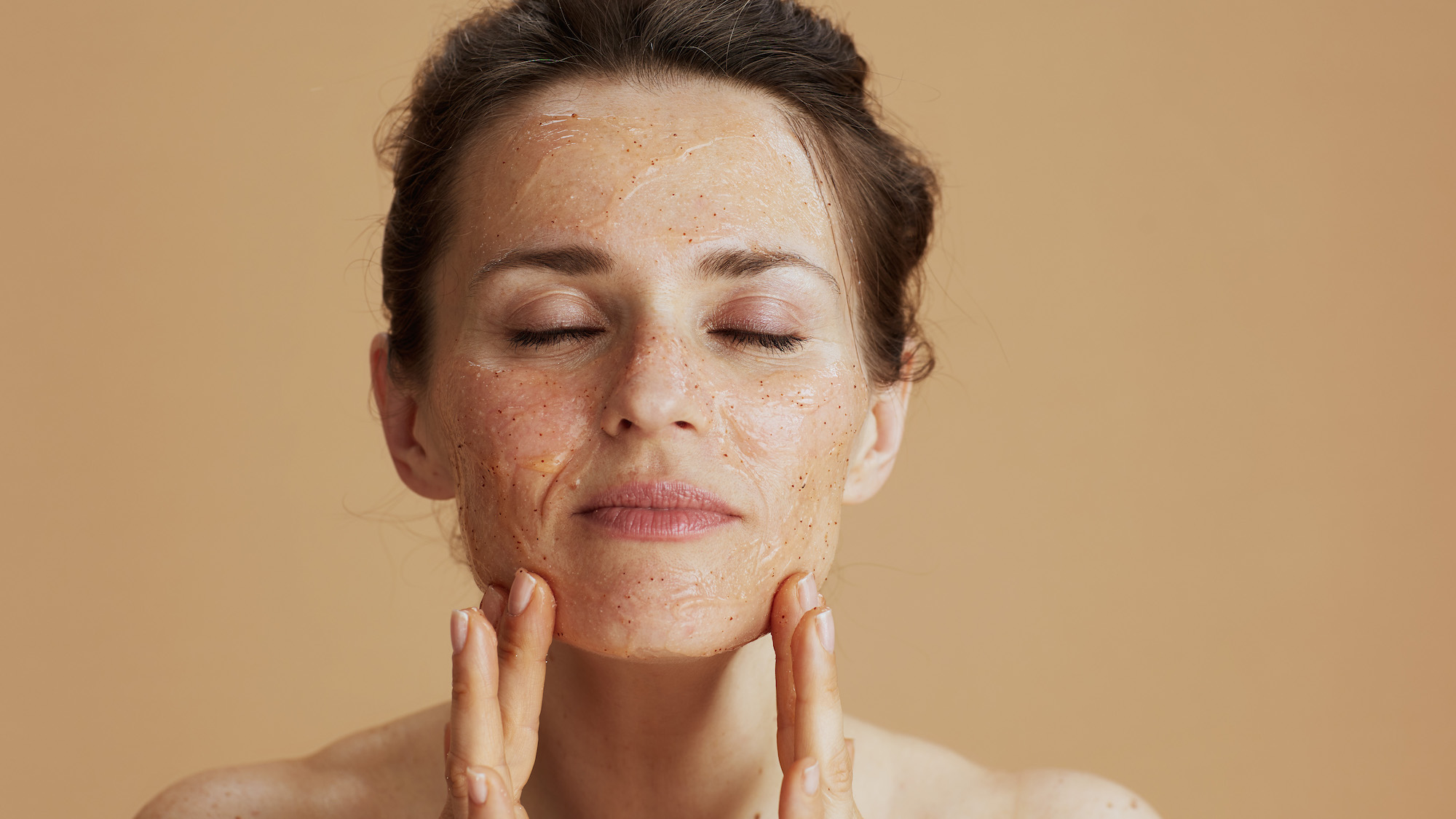

Creating the perfect skincare routine for you takes time and dedication. Trust me, even as a beauty editor with a decade’s worth of experience in the industry, there is still a certain amount of trial and error required when it comes to finding products that will work for your skin’s needs. And skincare gets all the more complicated when it comes to adding additional steps. Sure, you might have locked down the best cleanser and a great moisturiser, but it’s the extra products that arguably make the biggest difference. I personally have a specially curated edit of serums that I can pull out when my skin is playing up, and I’ve recently committed to a decent eye cream that I apply both morning and night, not only when I’m looking a bit tired. However, there’s one step in my skincare routine that people tend to be on the fence about—exfoliation. A quick poll amongst my friends and family reveals that when it comes to the best exfoliator, people are either evangelical about sloughing away dead skin cells on the regular or they ignore the process entirely—preferring not to add another step to their routines or worried about causing irritation.
But, did you know that exfoliating regularly might just be the key to unlocking your brightest, smoothest skin? And, luckily, it isn’t even a step that you need to do every day. Ahead, I spoke to Dr Sophie Momen, consultant dermatologist at the Cadogan Clinic, to get the lowdown on exactly what exfoliation can do for our skin and to share the best exfoliator for every skin type and concern.
What is a face exfoliator?
Exfoliators are effectively skincare products which remove dead skin cells from the surface of the skin. If left to their own devices, these cells can often clog open pores—leading to breakouts—or contribute to a dull appearance on your skin. There are two different types of exfoliator to choose from—physical or chemical—and the best exfoliator for you will depend on your skin type and the results you’re hoping to achieve. Physical exfoliators are sometimes referred to as face scrubs. Punchy chemical exfoliators, ones that work more like a treatment are also known as chemical peels.
“Physical exfoliators use small granules, brushes or scrubs to manually remove dead skin cells,” explains Dr Sophie. “They can be suitable for normal to oily skin types, however, they are often abrasive for sensitive or acne-prone skin as harsh scrubbing can cause irritation and microtears.” Instead, Dr Sophie recommends chemical exfoliators as the best option in most cases.
“Chemical exfoliators use active ingredients like AHAs (alpha hydroxy acid), BHAs (beta hydroxy acids) and enzymes to dissolve dead skin cells. AHAs such as glycolic or lactic acid are water-soluble and work well for dry or mature skin by improving texture and reducing fine lines. BHAs including salicylic acid are oil-soluble, making them ideal for oily and acne-prone skin since they penetrate deep into pores to unclog them. Enzyme-based exfoliators, derived from natural fruit enzymes like papaya or pineapple, are gentle and suitable for sensitive skin types.”
What does using a face exfoliator do?
In short, the best face exfoliators are a bit of a shortcut to brighter, smoother skin. “Regular exfoliation as part of your skincare routine helps to remove dead skin cells that accumulate on the surface of the skin, which can lead to dullness and clogged pores. By clearing away this layer, exfoliators reveal fresher, more radiant skin underneath,” explains Dr Sophie. Plus, by clearing away that layer of dead skin cells, you’ll be helping the rest of your routine to be all the more efficacious by allowing better absorption of your other products, like serums and moisturisers.
As well as the immediate benefits, adding an exfoliator to your routine can also improve the health and appearance of your skin long-term. “Regular exfoliation also promotes cell turnover, helping to reduce the appearance of fine lines, wrinkles and uneven skin tone,” says Dr Sophie. “Plus, it can prevent breakouts by unclogging pores and reducing the buildup of excess oil and impurities.”
The 12 best exfoliators for every skin type
Oily Skin
1. Alpha-H Liquid Gold
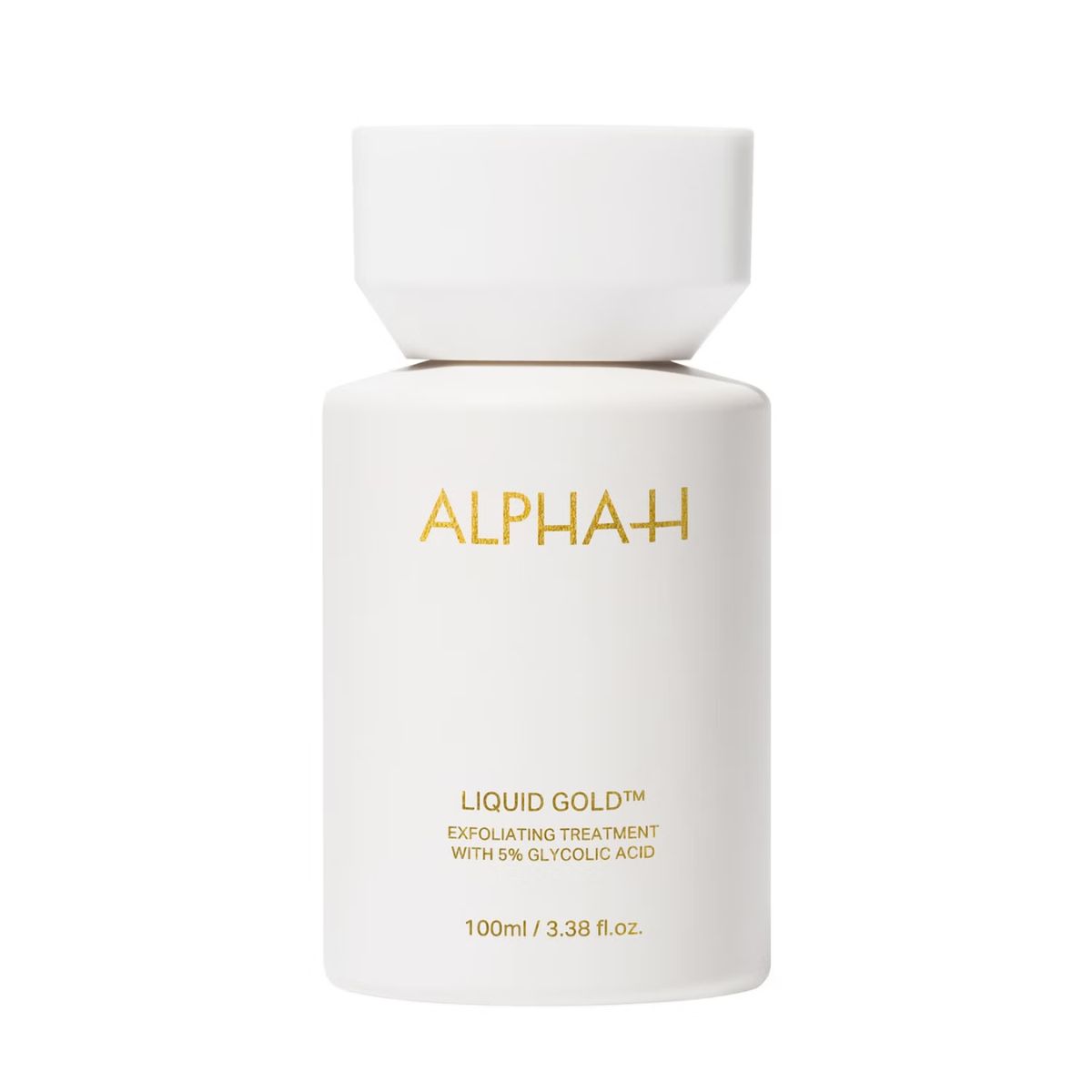
Alpha-H Liquid Gold
Specifications
Reasons to buy
Reasons to avoid
I have used this cult exfoliator for years and while I think lots of skin types would benefit from its brightness-boosting benefits, I think that it’s particularly brilliant for oily and spot-prone complexions like mine. Formulated with 5% glycolic acid, it’s a chemical exfoliator that not only deeply penetrates pores to unclog them, but also works to resurface areas of the skin that have been left textured and scarred from previous breakouts. By building use up gradually, skin will be left visibly brighter and more smooth in texture and tone within weeks.
2. Paula's Choice Skin Perfecting 2% BHA Liquid Exfoliant

Paula's Choice Skin Perfecting 2% BHA Liquid Exfoliant
Specifications
Reasons to buy
Reasons to avoid
Another iconic exfoliator, Paula’s Choice salicylic acid-based chemical exfoliator is one of the best on the market for oily, congested and breakout-prone skin—and it gets to work fast. While the formula does contain a 2% dose of salicylic acid, it feels incredibly gentle on the skin thanks to an infusion of antioxidant-rich green tea extracts. If you have stubborn black heads on areas like your nose and chin then this will start to shift them within days of use, leaving skin clear, soft and fresh. However, as a bit of a skin picker I would not use this on any particularly sore breakouts as it can get a bit stingy—wait for the area to heal before application.
3. Medik8 Pore Refining Scrub
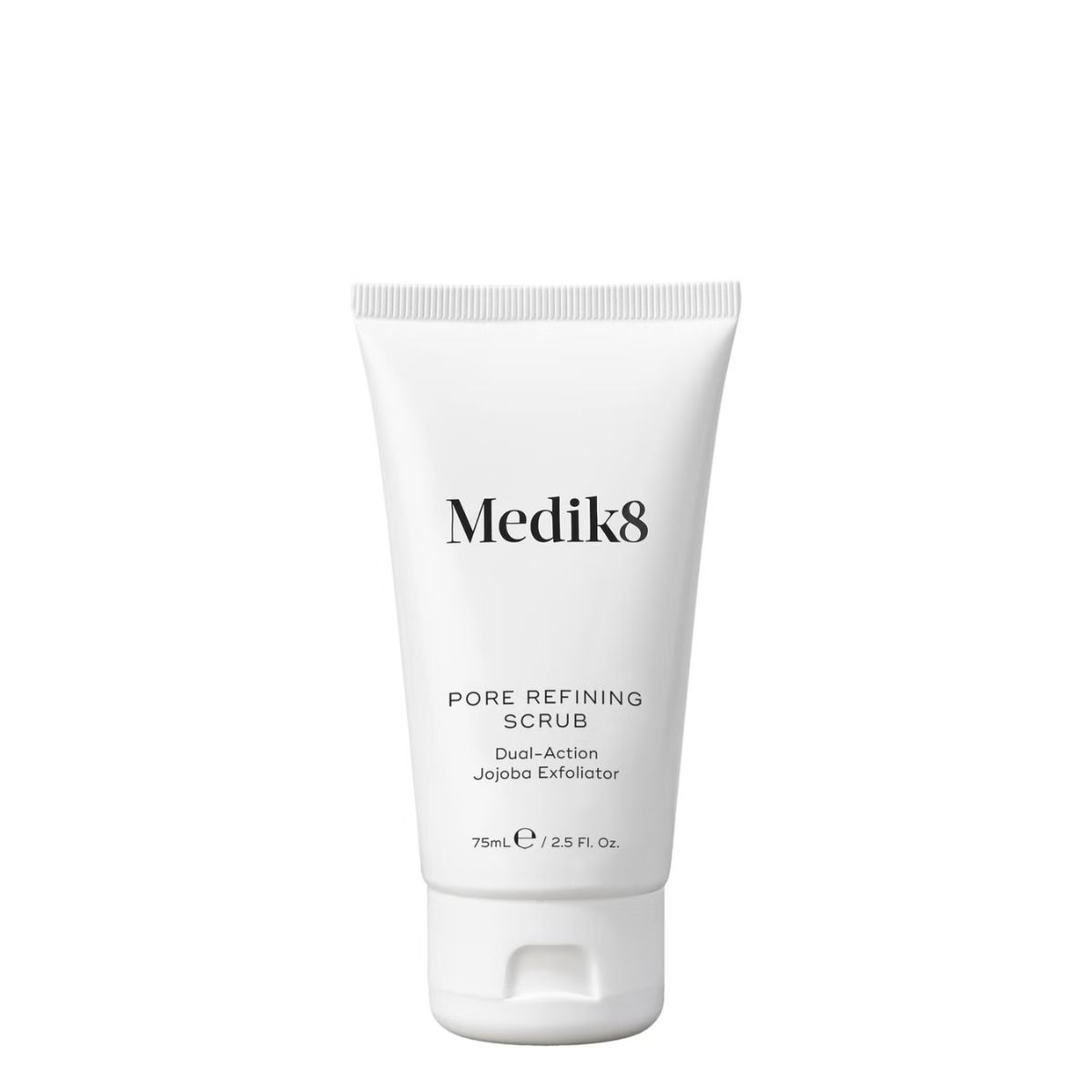
Medik8 Pore Refining Scrub
Specifications
Reasons to buy
Reasons to avoid
While Dr Sophie has warned against regular use of a physical exfoliator, she did point out that they are best suited to normal and oily skin types if you do like that feeling of a proper scrub. This one from Medik8 is a brilliant compromise as it has physical exfoliants in the form of biodegradable jojoba grains to slough away dead surface cells, but it also contains salicylic and mandelic acids for a more pore-penetrating chemical exfoliant. It does a great job at smoothing and refreshing the skin, and it also contains niacinamide to keep skin regulated and clarified post-exfoliation.
Dry and Mature Skin
4. Elemis Pro-Collagen Glow Boost Exfoliator
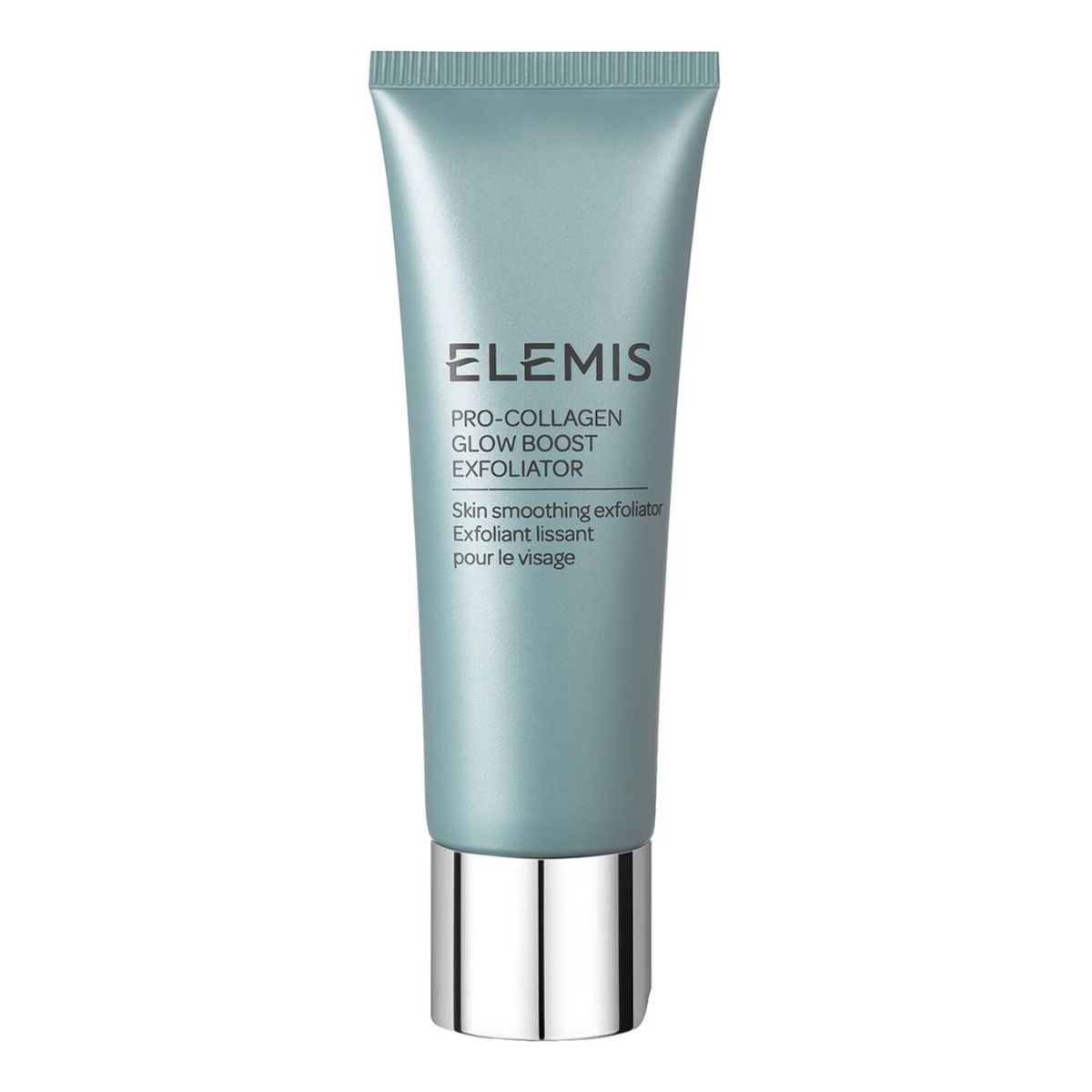
Elemis Pro-Collagen Glow Boost Exfoliator
Specifications
Reasons to buy
Reasons to avoid
If you love the iconic Elemis cleansing balm, then this will be the perfect exfoliator for you. Infused with so many of the same beautiful oils and waxes as the cleanser, it has that addictive spa-like scent and feels like a real treat to use at home. This is a physical exfoliant, using cellulose beads sourced from spruce trees (no microbeads here) to gently remove dead skin cells that might be causing dryness or dullness on the surface of your skin. It isn’t the most dramatic of results (if that's what you're after, keep scrolling for the Kate Somerville ExfoliKate), but it’s brilliant at softening, smoothing and cleansing dry skin without causing further dehydration. If you want healthy, subtly luminous skin then it’s a beautiful exfoliator to try.
5. Caudalie Vinoperfect Concentrated Glycolic Essence
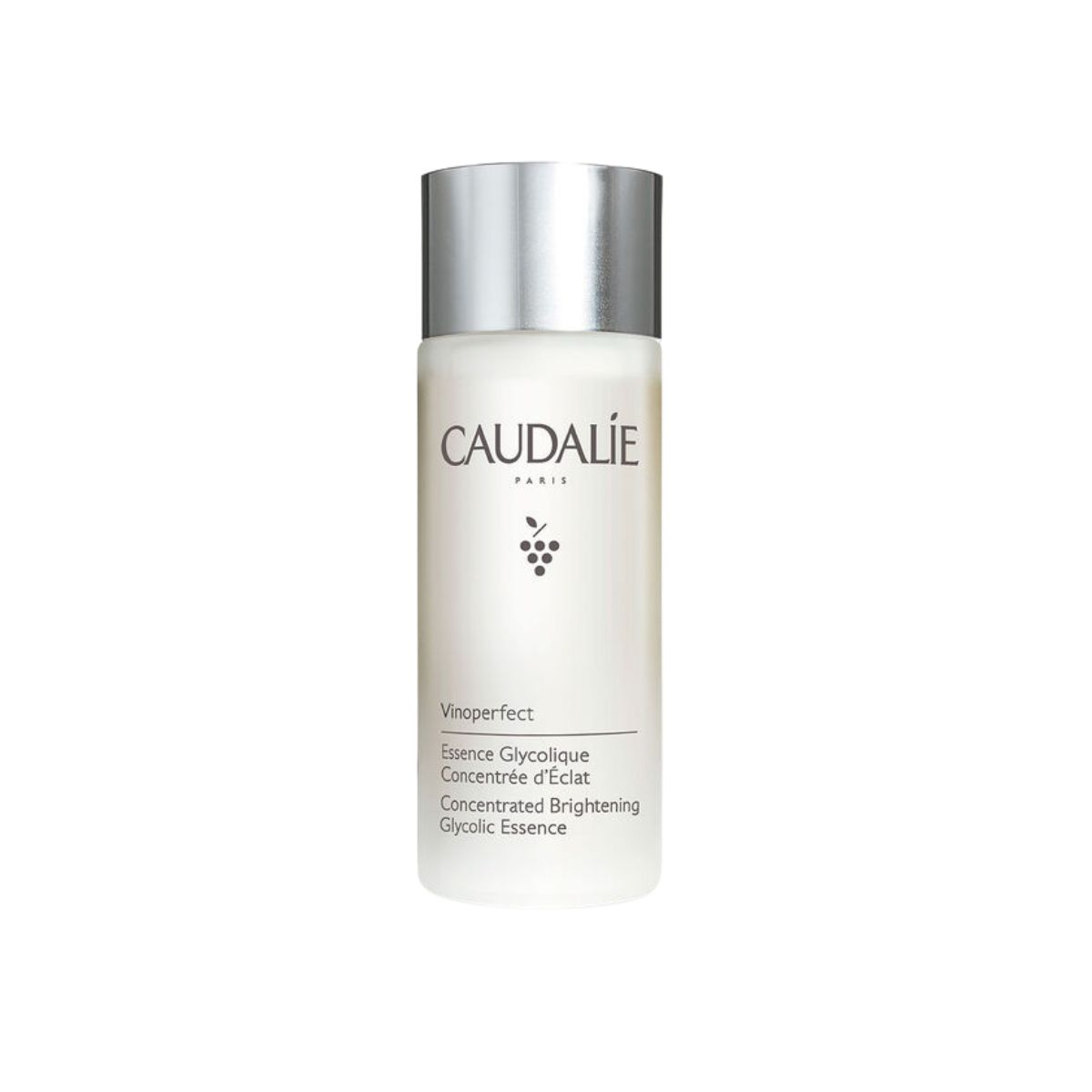
Caudalie Vinoperfect Concentrated Glycolic Essence
Specifications
Reasons to buy
Reasons to avoid
As our skin ages, pigmentation is often one of the biggest concerns, but this glycolic essence from Caudalie not only removes dead skin cells but also prevents and reduces the appearance of dark spots. The oil-free toner is ultra-gentle (so gentle, in fact that it would work brilliantly for all skin types) but the infusion of the brand’s renowned grape water alongside floral extracts means that it’s particularly good for more dry skin which won’t benefit from any products that are too stripping. This one leaves skin naturally glowing and more even in tone, and can be used morning and night ahead of your usual serums and moisturisers.
6. Kate Somerville ExfoliKate Intensive Exfoliating Treatment
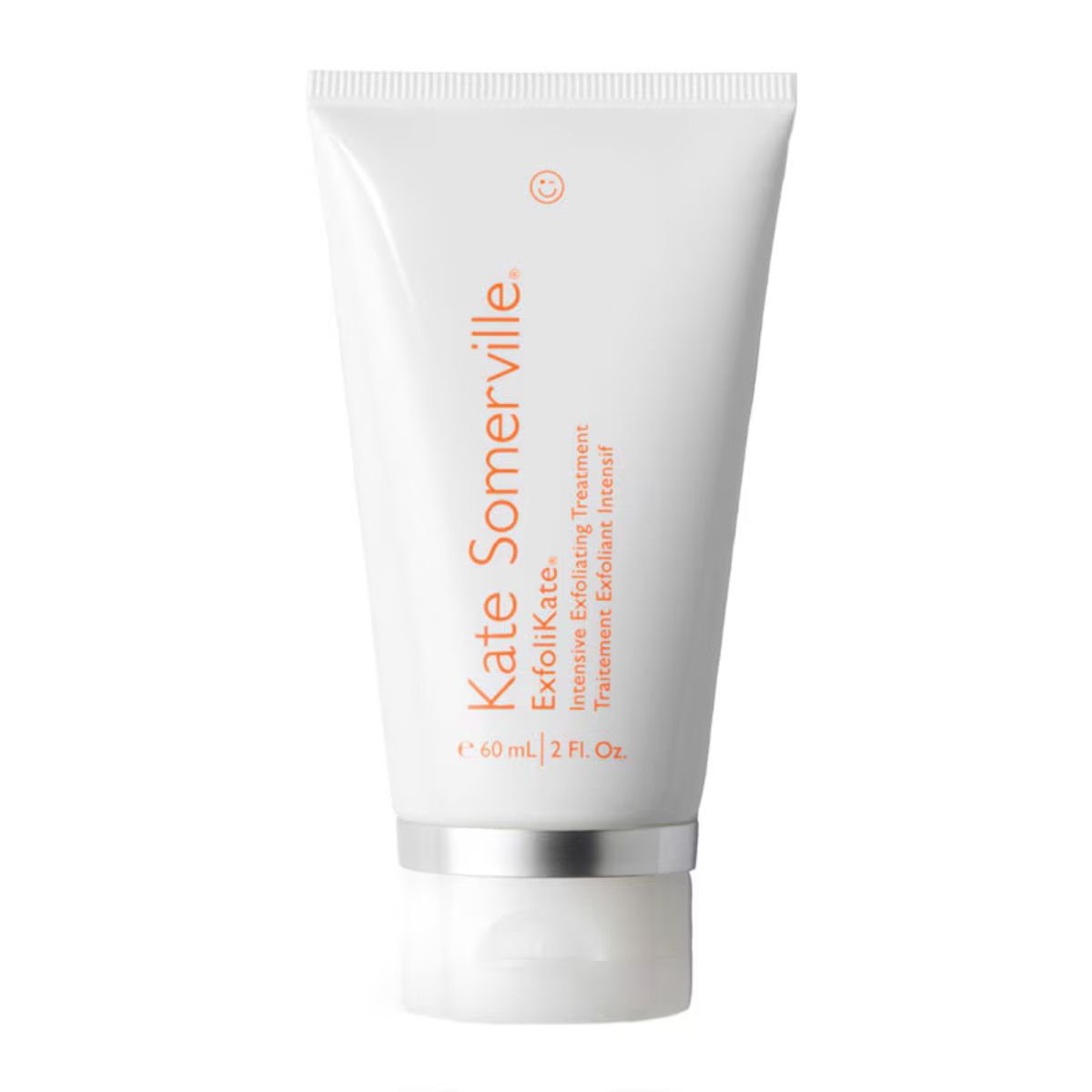
Kate Somerville ExfoliKate Intensive Exfoliating Treatment
Specifications
Reasons to buy
Reasons to avoid
Inspired by Kate Somerville’s in-clinic treatments, it is no surprise that this is one of the best exfoliators for fast and visible results. The formula is complex—a blend of lactic and salicylic acid (that’s AHAs and BHAs) to really shift any dead skin cells that are sticking around, silica beads for a natural physical exfoliator, and papaya, pineapple and pumpkin enzymes which really nibble away at the surface layer of your skin to reveal that coveted glow. Applied to clean skin for a couple of minutes, just once or twice a week, is more than enough to transform dull, dry or textured skin into a bright and glowy delight. And if you do have things like fine lines, large pores, or other texture (who doesn’t?) then the results really are impressive when it comes to improved skin clarity and a smoother texture overall.
Combination Skin
10. Biossance Squalane and BHA Pore Minimising Toner
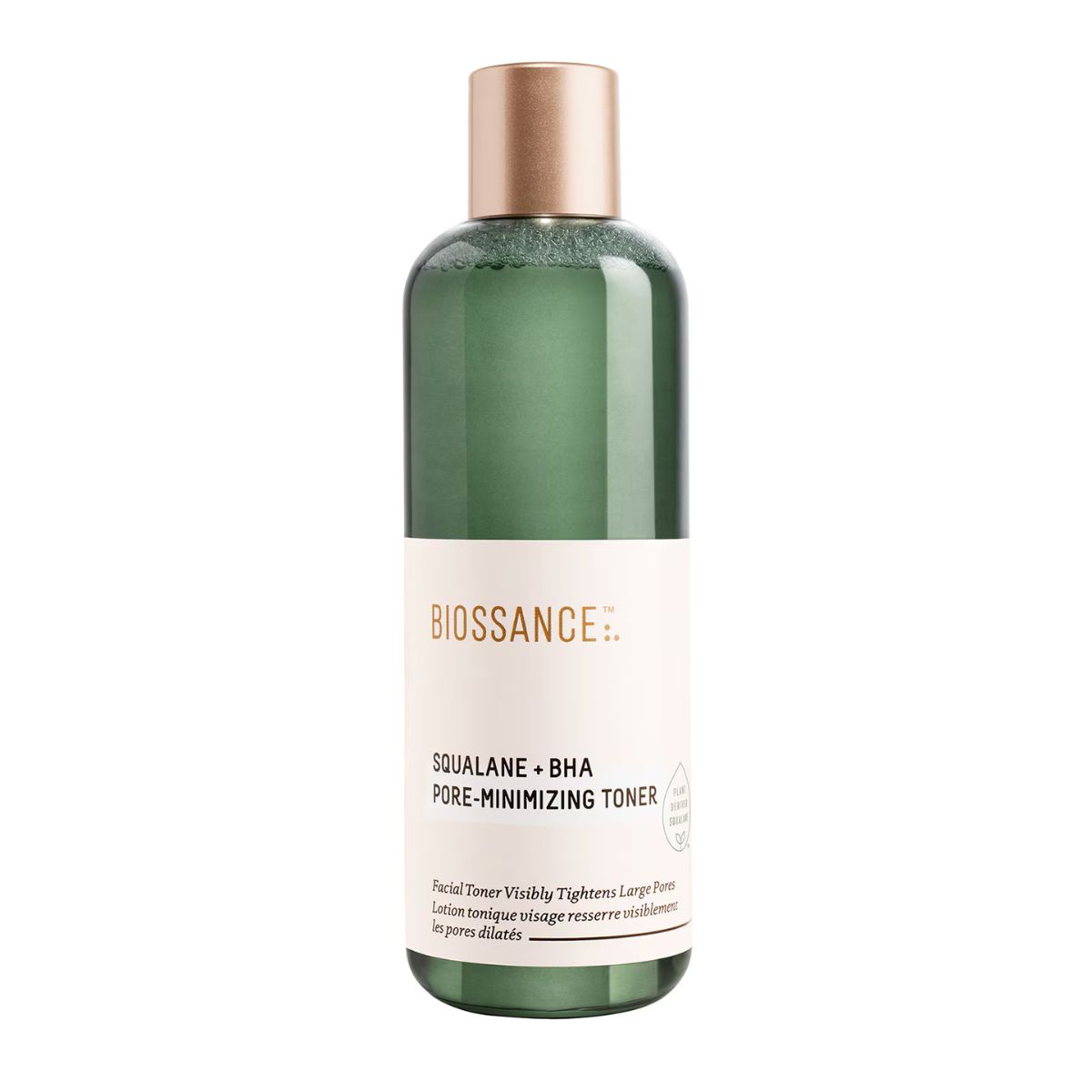
Biossance Squalane and BHA Pore Minimising Toner
Specifications
Reasons to buy
Reasons to avoid
Finding the best exfoliator for combination skin is hard as you’re having to walk the line between breakouts and oiliness alongside dry patches and dehydration, but this toner from Biossance has all bases covered. The star ingredients are willow bark, a natural source of BHA, which not only dissolves dead skin cells but also calms inflammation, and squalane which is an incredible hydrator. Best pressed onto the face using clean palms, it makes light work of shifting excess oil and pore-clogging debris, while also hydrating parched areas to leave skin fresh, plump and juicy-looking.
11. The INKEY List PHA Toner
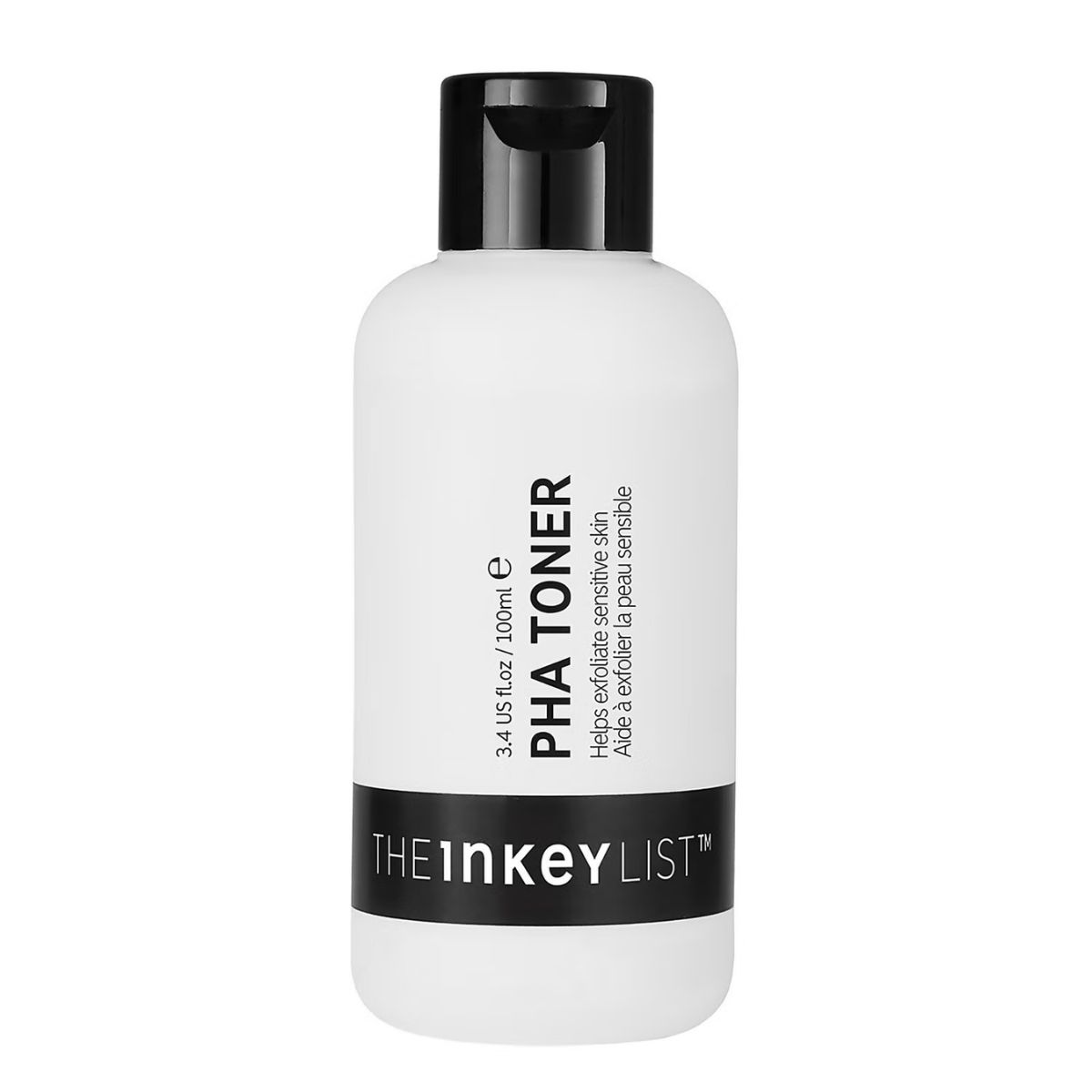
The INKEY List PHA Toner
Specifications
Reasons to buy
Reasons to avoid
We’ve had a lot of talk of AHAs and BHAs, but lesser-known PHAs (that’s polyhydroxy acids) are a brilliant alternative chemical exfoliant to look out for if you have combination or sensitive skin. They are made up of larger molecules which means they don’t penetrate the skin so deeply and, hence, cause less irritation. This one from The Inkey List contains a 3% helping of PHA to really focus on improving skin texture, while 3% niacinamide reduces excess oil levels and clarifies tone. Plus, because it’s so gentle you can use it morning and night to really maintain that smooth texture and subtle glow.
12. Glow Recipe Watermelon Glow PHA + BHA Pore-Tight Toner
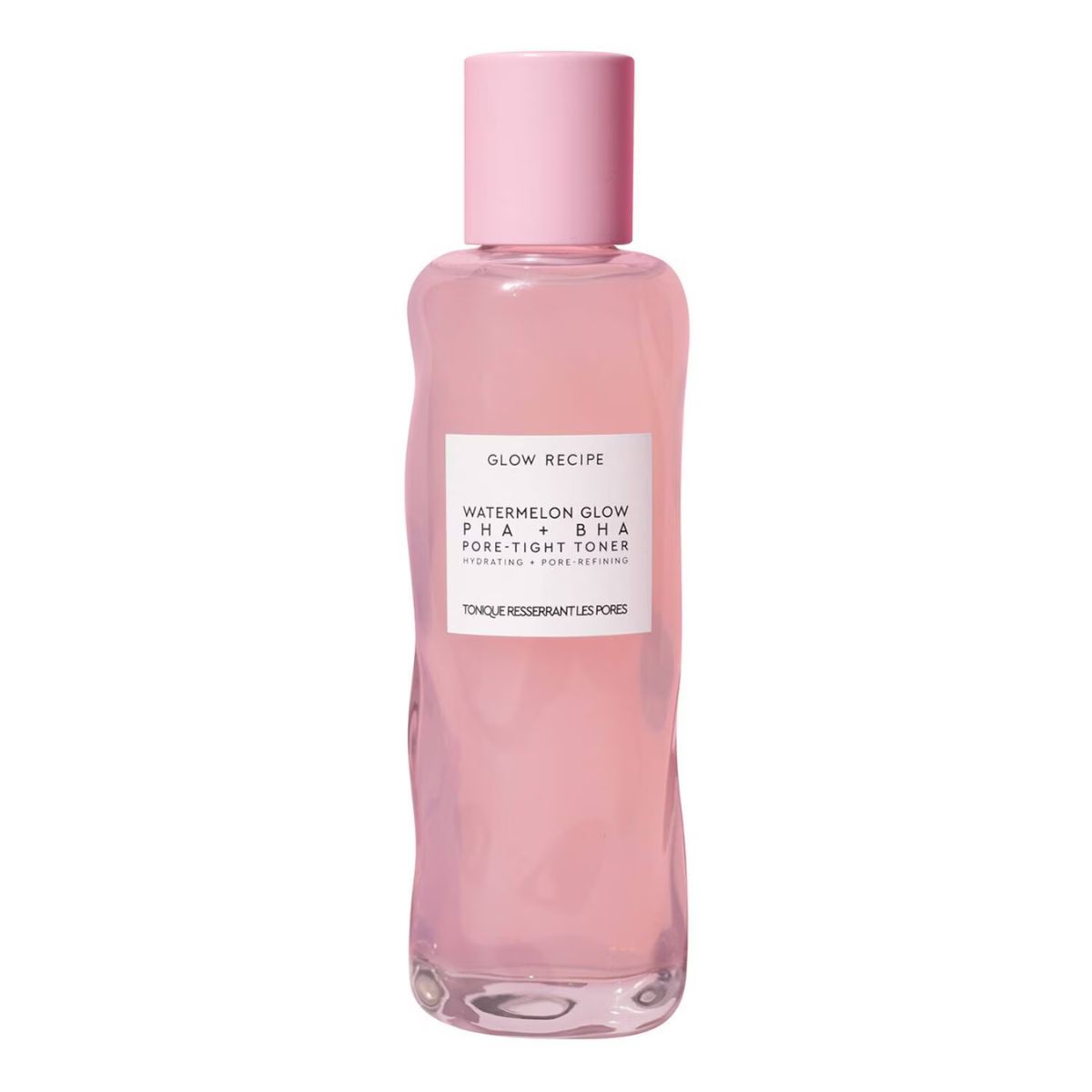
Glow Recipe Watermelon Glow PHA + BHA Pore-Tight Toner
Specifications
Reasons to buy
Reasons to avoid
Possibly the most beautiful exfoliator in the lineup, this hydrating and brightening toner is brilliant for combination skin types who want to both minimise the appearance of pimples and pores while quenching the thirst of drier parts of their face. This one uses both poly and beta hydroxy acids to offer deeper, pore-sloughing exfoliation alongside gentler surface level brightening. Plus, it’s absolutely brimming with five weights of hyaluronic acid to drench skin with hydration at all levels and restore some elasticity and bounce.
Sensitive Skin
7. Dermalogica Daily Milkfoliant
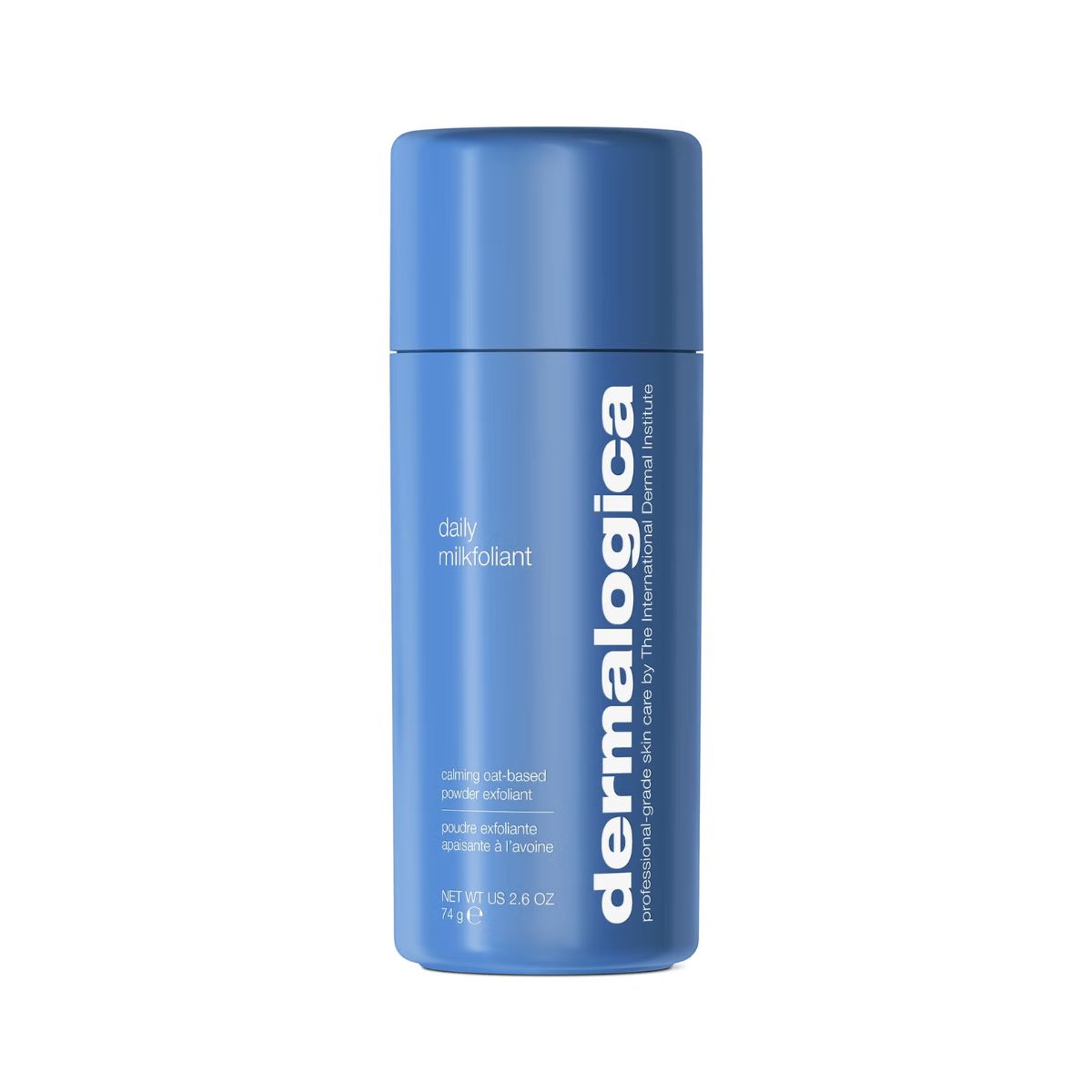
Dermalogica Daily Milkfoliant
Specifications
Reasons to buy
Reasons to avoid
The key to keeping sensitive skin happy when you’re exfoliating is making sure that the skin barrier is maintained, and that is exactly the aim behind Dermaologica’s Daily Milkfoliant. An ultra-gentle exfoliating powder, it’s made of a blend of oat and coconut milk to polish skin, while arginine—an amino acid that’s naturally rich in AHAs and BHAs—provides that chemical exfoliation element. The powder activates once you mix it with water, transforming into a milky lotion that can be massaged over skin then rinsed clean to reveal calm, soft and smooth skin.
8. Aveeno Face Calm and Restore Gentle PHA Exfoliating Cleanser
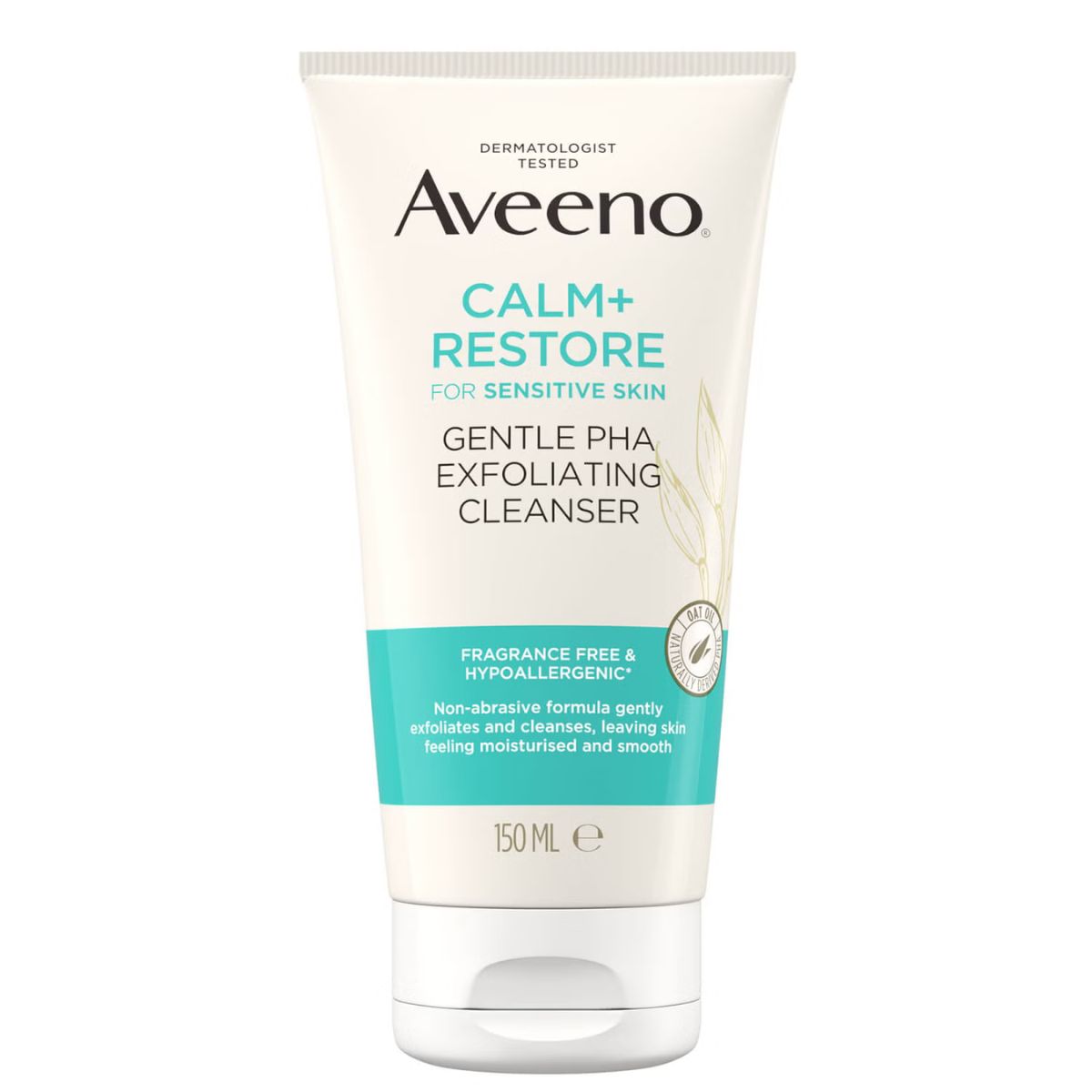
Aveeno Face Calm and Restore Gentle PHA Exfoliating Cleanser
Specifications
Reasons to buy
Reasons to avoid
Developed specifically for sensitive skin types, the entire Aveeno Calm and Restore line is worth checking out if you’re prone to irritation. However, this daily exfoliator is a great starting point if you’re looking for a non-abrasive way to smooth the texture of your skin and rid your complexion of dead skin cells without causing any adverse reactions. While I wouldn’t say that it is the most efficacious formula for a radiance boost, it undoubtedly keeps skin really smooth and soft while maintaining the skin barrier’s hydration levels. PHAs work in a similar way to glycolic acid but as they're larger molecules so don't penetrate the skin as deeply. A great option for very sensitive or reactive skin types.
9. Paula’s Choice 6% Mandelic + 2% Lactic Acid AHA Liquid Exfoliant
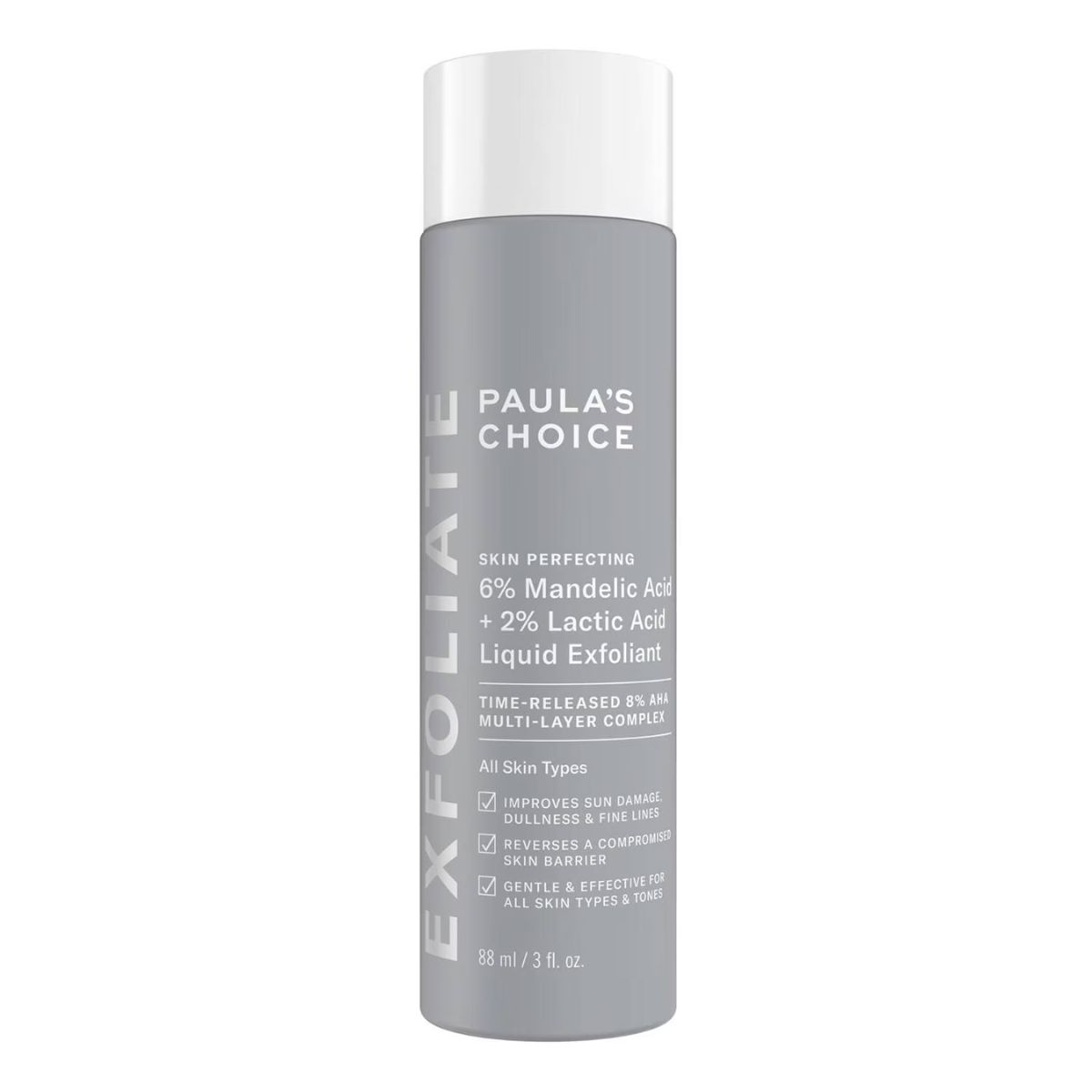
Paula’s Choice 6% Mandelic + 2% Lactic Acid AHA Liquid Exfoliant
Specifications
Reasons to buy
Reasons to avoid
I’ve already mentioned the iconic Paula’s Choice BHA exfoliator, but there’s another from the brand that’s well worth shouting about—this new mandelic and lactic acid-based chemical exfoliator. After the sensitive skin community wanted to get their hands on something that could keep breakouts at bay without compromising their skin barrier, the Paula’s Choice team came up with this gentle solution. It revives glow, evens tone, smooths texture, and reveals that baby-soft skin beneath the surface, but all via a more gentle combination of alpha hydroxy acids that won’t cause irritation or sensitivity.
How often should you use an exfoliator?
The frequency of exfoliation depends on your skin type, but Dr Sophie is a real advocate of everything in moderation, stating that one to three times a week is a good place to start. “For normal or oily skin, exfoliating twice to three times weekly can help maintain smooth, clear skin. Dry or sensitive skin, however, benefits from gentler exfoliation, so around once a week should suffice to prevent losing essential moisture and causing irritation,” Dr Sophie advises.
Over exfoliating can cause its own issues with things like redness, dehydration, sensitivity and breakouts being some of the main symptoms. “Signs of over-exfoliation include tightness, peeling or a stinging sensation when applying other products,” says Dr Sophie. So, if you do start experiencing any of this while using an exfoliator, simply have a break for a while and then re-introduce one slowly and gradually.
Marie Claire Newsletter
Celebrity news, beauty, fashion advice, and fascinating features, delivered straight to your inbox!
Mica Ricketts is a freelance beauty editor and contributor to Marie Claire. She has written for titles including Refinery29 and Who What Wear UK, and also works with beauty brands on content messaging and marketing copy. She was previously Who What Wear UK's beauty editor. As someone that has tried basically every acne product on the market, she has a particular passion for debunking skincare myths and finding products that work. Plus, with two small children at home she is all about time-saving beauty routines that boost glow and disguise dark circles.
-
 Prince Harry's "proud" words about wife Meghan Markle are going viral
Prince Harry's "proud" words about wife Meghan Markle are going viralBy Jenny Proudfoot
-
 Sources have opened up about Timothée Chalamet and Kylie Jenner's "intense" start to the year
Sources have opened up about Timothée Chalamet and Kylie Jenner's "intense" start to the yearBy Jenny Proudfoot
-
 Two Hollywood actresses were offered the role of Carrie Bradshaw before Sarah Jessica Parker
Two Hollywood actresses were offered the role of Carrie Bradshaw before Sarah Jessica ParkerBy Jenny Proudfoot